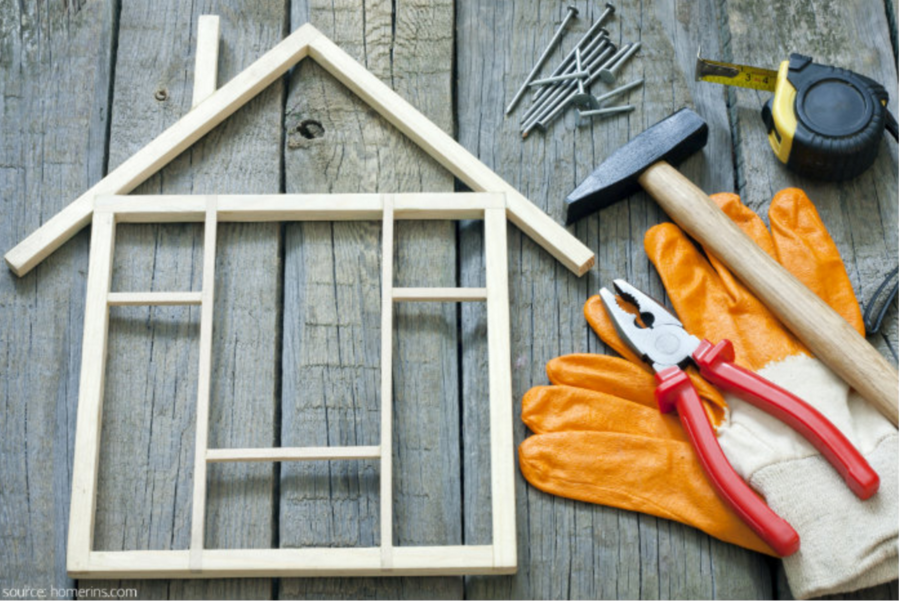Handy homeowners take pride in maintaining their house in excellent condition and upgrading its appearance. However, some home improvement work is best left to a professional with the skills, tools and certification required to do the job safely and effectively.
DIY Home Repair: Why or Why Not?
Before we consider what home repairs should be done by the experts, let’s look at the advantages and disadvantages of working on your own home, and we’ll begin with the pros.
- Pride of ownership: There’s a definite satisfaction that comes with a job well done around the house
- Cost savings: You save the expense of professional home repair when you do it yourself
- No bothersome interruptions: Calling in a carpenter, plumber or electrician means having to disrupt your plans to give them access to your home
- Pass on a skill: Parents who involve their kids in the project are providing their children with know-how and the accompanying confidence that will prove valuable in the future
Okay, while DIY home maintenance has a lot to offer, there are a couple of drawbacks:
- Time is valuable: It is the one commodity you can’t make more of, and doing home repair yourself reduces your opportunities to use the time for things that are meaningful to you
- Tools aren’t cheap: Some look at these as an expense; the DIY enthusiast might, however, consider tools as an investment that will yield future satisfaction and cost savings
- The possibility of errors: Someone doing a job for the first time is more likely to make a mistake which could create further cost, hassle and loss of time
- Dangers: There are physical risks in DIY home projects ranging from falling off a ladder to being electrocuted
DIY Projects to Try
The best home improvement projects for the inexperienced are those that require only basic skills and tools, and these fit that description.
Patch small holes in the plaster or drywall: Spackle, a putty knife, fine sandpaper and other affordable items are all you need (and this little guide here)
Update door knobs: This is a straight-forward project that can be accomplished with a single screwdriver.
Replace an electrical plug: Make sure the electrical circuit is off, and transfer one wire at a time from the old plug to the new plug.
Repair a leaking pipe: Turn the water off, disconnect the leaking pipe, and replace the faulty valve, flange or gasket.
Put new screens in doors and windows: Look for a kit at your home improvement store, and make sure you take the old screen retainer spline with you to get the right size.
Replace a toilet flapper: Most replacement flappers have clear instructions on removing the old part and installing the new one.
Clean the AC condensing unit coil: A water hose and stiff brush are ideal for removing dirt and yard debris from the fins of the coil, so your AC will run more efficiently.
Pour a small concrete pad: If the pad is for a shed, doghouse or condensing unit, go ahead and give it a shot since it doesn’t have to be finished perfectly.
Home Improvement Projects to Leave to the Pros
We recommend calling in pros for these jobs because of the difficulties involved.
Replacing a central air conditioner: A handling license is required to work with refrigerant, and the tools needed to charge and check a system are very expensive.
Installing an electrical panel: This is a job that has a higher risk of electrical shock than replacing a plug or light switch.
Connecting gas pipe to a heater or appliance: Due to the risk of a leak and subsequent explosion from poorly fitted piping, it is absolutely essential that this job be done properly.
Running heater exhaust: Combustion gases contain carbon monoxide, and a leak in the exhaust vent could result in sickness or death from CO poisoning.
Asbestos removal: This material is highly toxic and requires the utmost care in removing, so calling in an asbestos removal expert is the right choice.
Making repairs on a steep roof: Most homeowners don’t have the tools, training and experience needed to safely handle roofing or chimney repairs on a steep slope.
Replacing a garage door torsion spring: These springs are under immense torque, and one false move could unleash that energy in ways that injure or kill.
So there you have it, folks. This is by no means a definitive guide for do’s and don’ts, since every homeowner and problems they bump into are different. However, with enough patience and practice, you’ll become experienced enough to fix majority of issues yourself, or stop them before they become full blown disasters.


